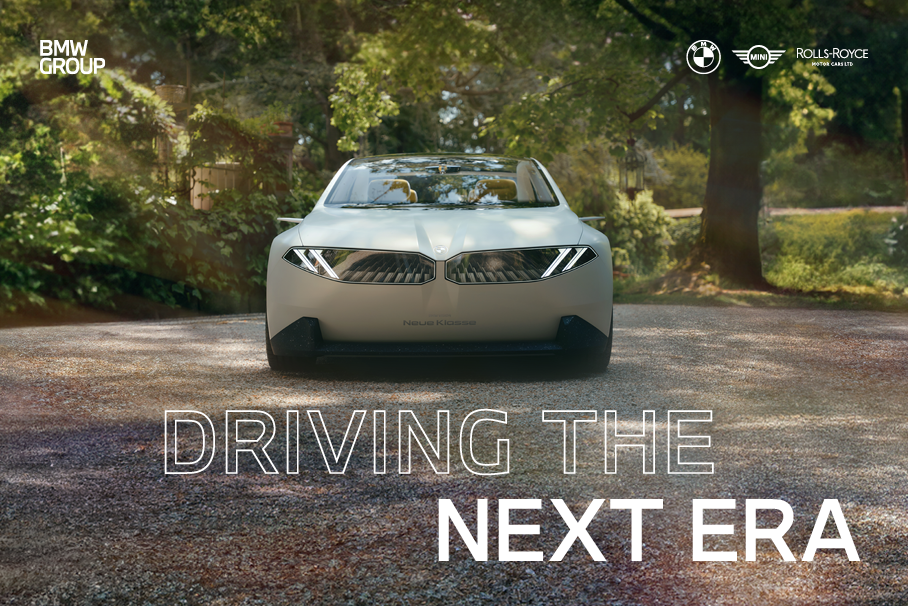Driving experience
Today, driving is much more than working the steering wheel, accelerator and brake. Driving is an experience. Connected, convenient and increasingly automated. Intelligent systems and innovative solutions support customers in every driving situation. The driving dynamics adapt to the needs of the drivers, intelligent functions provide control and safety – even in challenging moments. The BMW Group has been promoting research into the driving experience 4.0 since the 1990s. This includes a unique relationship between human and machine and deep integration of the vehicle into an everyday customer life shaped by mobility The future is not a vision at the BMW Group, it has already begun.
Five steps to the driving experience of the future.

Level 1: Assisted driving
Since the invention of the automobile in 1886, the motto has been: “driver only” – the driver was on their own. With the dawn of the new century, the driver receives assistance. Today, intelligent driver assistance systems are already used in many cars and provide more safety and convenience. Adaptive Cruise Control (ACC) plays a central role in this Level 1. In its different expansion stages it senses the vehicle in front with the aid of radar sensors and cameras and ensures that preselected speeds and distance settings are not violated. Adaptive Cruise Control supports the vehicle driver in certain situations and increases the driving comfort. The term “driver assistance system” enters the lexicon.
Level 2: Partially automated driving
As of now driver assistance systems can take over even more of the driver’s tasks, if the driver wants this and the driving situation permits. However, the driver must continuously monitor the systems. The sophisticated driver assistance systems enable greater automation of the driving task through an advanced sensor system, which significantly increases safety, convenience and efficiency for the driver. Steering and Lane Control Assistants can brake, accelerate and even temporarily take over steering autonomously, for example to keep the vehicle in its lane or also for driverless parking. This is made possible by a high-resolution camera (8Mpix) and multiple radar sensors that sense the vehicle’s surroundings and detect both lane boundaries as well as vehicles driving in front. The BMW Highway Assistant permits hands-off driving already today in some countries at speeds up to 60 km/h (USA, Canada, Japan, China). In the USA and Canada, this will even be possible at speeds of up to 130 km/h in the future. The driver can thus keep their hands off the wheel, but must continue to observe the traffic situation and be able to intervene.
Level 3: Highly automated driving
If certain requirements are met, the driver can direct their attention permanently from the traffic situation, for example during extended periods of motorway driving. However, even then the driver must still be able to take over control again within a few seconds. The technological jump from Level 2 to Level 3 is extremely challenging and at BMW is based on a comprehensive safety concept. The only way to negotiate the complex traffic situations is with the best sensor system, a real-time-capable HD card and a precise and reliable way of capturing reality.
Level 4: Fully automated driving
The system masters driving on certain routes or in certain areas completely independently, the driver temporarily becomes the passenger. The driver no longer has to monitor the system and can do other things during the journey. For particular route sections for which the system is not yet designed, the driver is additionally prompted in good time to take over control again. If they do not do this, the vehicle will bring them to a safe state by stopping in a parking space, for example. The driver must still have a valid driver licence and be fit to drive at this level. An integral part of the BMW Group’s self-image here too is that the customer decides whether they want to drive themselves or would like to be driven.
Level 5: Autonomous driving
The car is guided fully by the system and handles all the tasks required for this autonomously. The autonomous car can handle even complex situations like crossing a junction, going through a roundabout or the correct behaviour on a zebra crossing. There is no car driver any more, only passengers.
Our most important stops on the way to the future.
- 1997
- 2006
- 2011
- 2014
- 2015
- 2016
- 2017
- 2018
- 2019
- 2020
- 2021
- 2022
Driving dynamics.
Perfect position in corners, stability in every situation and, at the same time, utmost agility. The BMW Group is continually enhancing driving dynamics with a multitude of technological innovations. All parts of the vehicle are integrated into a single unit and all control units constantly exchange data with each other. In this way, traction, agility and driving stability can be optimally controlled at all times. The result is a unique driving experience that shapes the driving sensation as a signature feature – for the ultimate driving pleasure for which BMW is known.
OUR MILESTONES IN DRIVING DYNAMICS.
- 1985
- 1986
- 1989
- 1996
- 1998
- 1999
- 2003
- 2003
- 2005
- 2008
- 2010
- 2018
- 2019
- 2021
- 2022


